
July 27, 2024


July 27, 2024


At The University of Akron, students become confident leaders, engaged community members and career-ready graduates. We provide the connections and support to make their time in college result in much more than earning a degree.
At The University of Akron, students become confident leaders, engaged community members and career-ready graduates. We provide the connections and support to make their time in college result in much more than earning a degree.
Our students bring their passion, and we provide the possibilities.
Our students bring their passion, and we provide the possibilities.

Saturday, July 27, 2024, at 7 PM
The Cleveland Orchestra
Hannu Lintu, conductor
JEAN SIBELIUS
Lemminkäinen’s Return 5 minutes (1865–1957) from Legends, Op. 22, No. 4
WILLIAM WALTON
Cello Concerto 30 minutes (1902–1983)
I. Moderato
II. Allegro appassionato
III. Lento — Allegro molto
Mark Kosower, cello
INTERMISSION
DMITRI SHOSTAKOVICH
20 minutes
Symphony No. 5 45 minutes (1906–1975) in D minor, Op. 47
I. Moderato
II. Allegretto
III. Largo
IV. Allegro non troppo With the Kent Blossom Chamber Orchestra
Total approximate running time: 1 hour 40 minutes











Pre-concert performance at 6 PM, featuring the Kent Blossom Chamber Orchestra playing Ludwig van Beethoven’s Symphony No. 2, conducted by Cleveland Orchestra Associate Conductor Daniel Reith.
Tonight’s performance is dedicated to Amy and Steve Hoffman, and R. Thomas and Meg Harris Stanton in recognition of their generous support of music.


We’re communities working together to keep utility rates affordable.
Put NOPEC’s bulk buying power to work for you.
Since 2001, NOPEC has been working to keep your natural gas and electric rates manageable. We make it easy, with no tricky contracts and the flexibility to move between products without penalties or fees. Plus, with our 24/7 Customer Care Center, we’re always just a phone call away. For more than 20 years, NOPEC has had your back. And you can be sure we will continue to for years to come.
For more information, visit NOPEC.org or call 855-667-3201.

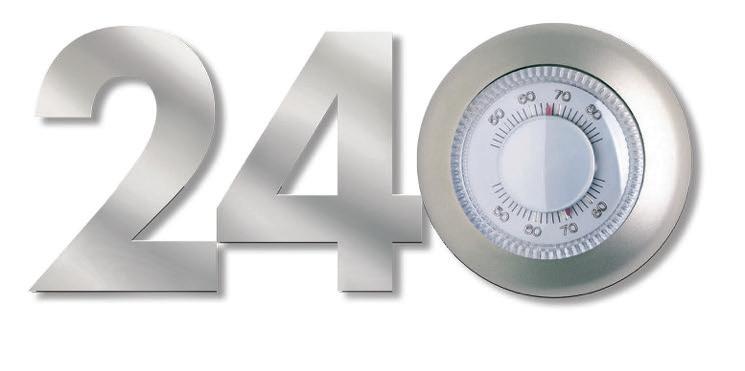
WHEN DMITRI SHOSTAKOVICH BEGAN COMPOSING his Fifth Symphony, his future looked bleak. An unsigned editorial in the Communist Party’s newspaper Pravda had denounced his opera Lady Macbeth of the Mtsensk District as “muddle instead of music,” and performances of his works evaporated overnight. Now a political pariah who feared for his life, Shostakovich began work on a new symphony he later subtitled “A Soviet Artist’s Creative Response to Just Criticism.”
Although Shostakovich publicly framed the Fifth as a musical apology, those who attended the work’s 1937 premiere recognized a deeper message embedded in the symphony’s unsettling score: Shostakovich was reacting to the cruelty of the Soviet regime and its Stalinist purges in real-time. Nearly a century later, the Fifth continues to stand as a gripping monument to all whose voices have been silenced by authoritarian oppression.
At the same time Shostakovich wrestled with his new symphony, English composer William Walton was enjoying tremendous success, his music embraced for its cinematic sweep, lush melodies, and jazzy rhythms. But by the premiere of his Cello Concerto in 1957, Walton had fallen out of fashion, his music now considered regressive and passé.
Even so, one can still find hallmarks of Walton’s younger days in the concerto. Inspired by a blossoming friendship with cellist Gregor Piatigorsky, the work’s dedicatee, and a recent move to the Italian coast, Walton later called his work for cello and orchestra — performed tonight by Principal Cello Mark Kosower — “the best of my three concertos.”
To open this evening’s program, Finnish conductor Hannu Lintu turns to his compatriot Jean Sibelius — a composer so synonymous with Finland that his portrait long adorned the country’s currency. Inspired by the Finnish national epic, Sibelius’s Op. 22 suite Legends focuses on Lemminkäinen, a young warrior admired for his adventurous spirit and boundless energy. In the final movement heard tonight, Lemminkäinen is welcomed home from a harrowing journey to the underworld with music of radiant triumph celebrating the hero’s wisdom and enduring strength.
— Michael Cirigliano II
by Jean Sibelius
BORN : December 8, 1865, in Hämeenlinna, Finland
DIED : September 20, 1957, in Järvenpää, Finland
COMPOSED: 1893–95
WORLD PREMIERE: April 13, 1896, in Helsinki, conducted by the composer
CLEVELAND ORCHESTRA PREMIERE: December 8, 1938, led by Music Director
Artur Rodziński
ORCHESTRATION: 2 piccolos, 2 oboes, 2 clarinets, 2 bassoons, 4 horns, 3 trumpets, 3 trombones, tuba, timpani, percussion (triangle, tambourine, cymbals, glockenspiel, bass drum), and strings
DURATION: about 5 minutes
TO THE FINNISH PEOPLE , the Kalevala is much more than a literary work. It stands as a symbol of Finnish national identity, the most important early document of the language, and a treasure trove of stories that most Finns are intimately familiar with. Its many lines of poetry were assembled in the 19th century by two Finns intent on saving their country’s disappearing tales of ages past, which had been handed down from one generation to the next for centuries. The publication of this long epic, first in 1835 and then in an expanded form in 1849, became a rallying call for a national renewal movement. For centuries, Finland had been dominated by foreign powers (Sweden, then Russia), and the language of educated people was Swedish. The publication of the Kalevala gave the decisive impetus to the movement that established Finnish as the country’s primary language. This in turn led to the struggle for national independence, which finally came in 1918.
Jean Sibelius, who came of age during this period of momentous change in Finnish history, could not help but be profoundly influenced by the Kalevala. The national epic gave him life-long inspiration, from his early choral symphony Kullervo (1892) to his last symphonic work, Tapiola (1926). In no fewer than 10 major works and many short ones, he evoked various adventures or scenes from the Kalevala’s legends, and perhaps unconsciously patterned some of its spoken rhythms within his musical style.
His Op. 22 suite, known as the Four Legends of the Kalevala (or simply, Legends), focuses on one of the poem’s central characters, Lemminkäinen. This youthful Don Juan is courageous to the point of recklessness, and embodies a spirit of adventure and boundless energy. The set of four pieces, in a way, outlines the structure of a fourmovement symphony: “Lemminkäinen and the Maidens of the Island” represents the
opening, “The Swan of Tuonela” the slow movement, “Lemminkäinen in Tuonela” a scherzo, and “Lemminkäinen’s Return” the finale.
Throughout the suite, the hero’s adventures range from the romantic to the tragic to the supernatural. Accordingly, the music encompasses a wide array of emotions, evoking in turn the mysteries of the cold, dark Northern landscape and the vigorous activities of the people who inhabit it. Some of the work’s musical ideas were derived from an opera project, The Building of the Boat, that Sibelius had abandoned, also based on a story from the Kalevala.

The final legend, Lemminkäinen’s Return (also known as Lemminkäinen’s Homeward Journey), uses a motif from the previous movement, which follows Lemminkäinen’s journey to Tuonela, the underworld in Finnish mythology. Now, however, the same theme that sounded gloomy and foreboding in the underworld returns bright and full of energy. This music shows the hero returned to life and the world, aged with wisdom, strength, and maturity, and, as the score preface indicates, born by “his cares and troubles.” Here he rides several gallant horses, inspiring the Finnish people with showmanship and charisma. The whole movement is a series of crescendos, each more powerful than the preceding one. The increase in volume is matched by a corresponding acceleration in tempo. The piece ends with a coda where the last trace of a shadow disappears — the dark minor mode that has prevailed until now finally gives way to a glorious and resplendent E-flat major sonority.
— Peter Laki
Peter Laki is a musicologist and frequent lecturer on classical music. He is a visiting associate professor of music at Bard College.

JULY 28 - AUGUST 10

by William Walton
BORN : March 29, 1902, in Oldham, England
DIED : March 8, 1983, in Ischia, Italy
COMPOSED: 1956
WORLD PREMIERE: January 25, 1957, in Boston, with cellist Gregor Piatigorsky and the Boston Symphony Orchestra, conducted by Charles Munch
CLEVELAND ORCHESTRA PREMIERE: February 26, 1976, with Zara Nelsova as soloist, led by Bernard Haitink
ORCHESTRATION: 2 flutes (2nd doubling piccolo), 2 oboes (2nd doubling English horn), 2 clarinets (2nd doubling bass clarinet), 2 bassoons (2nd doubling contrabassoon), 4 horns, 2 trumpets, 3 trombones, tuba, timpani, percussion (vibraphone, xylophone, cymbals, tam-tam, castanets, tambourine, snare drum, field drum, bass drum), celesta, harp, and strings
DURATION: about 30 minutes
“ONE DAY YOU’RE IN, AND THE NEXT DAY YOU’RE OUT” is a popular saying in the fashion industry, a warning to designers to anticipate ever-evolving consumer tastes, but it could just as easily apply to composers of classical music. Such was the experience of English composer William Walton, who over the course of his six-decade career became intimately familiar with how the passage of time can ravage the demand for a composer’s work.
Walton was championed as the enfant terrible of English music in the decade following World War I — a largely self-taught composer who early on embraced with unbridled interest the cutting-edge sound of jazz. He achieved notoriety in 1923 for his cabaret-style collaboration with writer Edith Sitwell, Façade, followed by the premiere of his Viola Concerto, which showcased Walton’s innovative approach to traditional classical forms. As Walton solidified his standing among London’s cultural elite throughout the 1930s and ’40s, he composed coronation marches for George VI and Elizabeth II, and, during World War II, contributed to the war effort by composing music for propaganda films.
But by the mid-1950s, the pendulum of Walton’s success swung in the opposite direction. His singular style was now criticized for being old hat, particularly by the European avant-garde who favored atonal modernism. Walton himself had seen the writing on the wall as early as 1939, when he said in a New York Times interview: “These days it is very sad for a composer to grow old. … I seriously advise all sensitive
composers to die at the age of 37. I’ve gone through the first halcyon period and am just about ripe for my critical damnation.”
While it’s true Walton’s renegade approach to composition had relaxed with age, his music still displayed the hallmarks of his younger self: a technicolor approach to orchestration, the influence of jazz and its propulsive rhythms, and his sorcerer-like ability to conjure any mood. Only now, he was fusing those elements with the melancholy harmonies and lush melodies of late 19th-century Romanticism, as we hear in his Cello Concerto.
Premiered by the Ukraine-born Soviet cellist Gregor Piatigorsky in 1957, the Cello Concerto is the third and final of Walton’s compositions for solo instrument and orchestra, a work fueled by two primary inspirations. First was Walton’s blossoming friendship with Piatigorsky, a result of their close collaboration throughout the composition process. Walton later wrote the cellist to thank him for his “sympathetic guidance,” concluding that, “It is to my mind the best of my three concertos.”
A change of scenery in 1955 proved the composer’s second inspiration. Long obsessed with Italian culture and its laid-back way of life, Walton and his wife Susana made a permanent move to Foro d’Ischia, a picturesque volcanic island in the Gulf of Naples. Susana confessed to friends that she heard the Cello Concerto as a portrait of their marriage. Whether or not the composer agreed — he disliked narrative elements applied to his music — the concerto embodies a profound sense of romance and serenity, with flashes of Walton’s fiery orchestration adding heat to the passion brewing under the music’s shimmering surface.
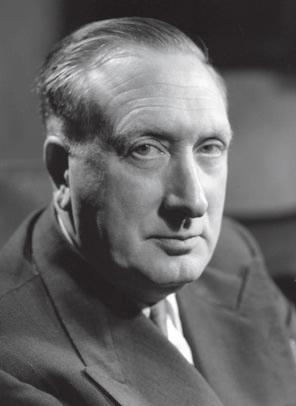
A mysterious gesture opens the work: a hypnotic ticking figure in the strings and woodwinds, over which the cello unspools a rhapsodic song of longing in its expressive upper register. Solo voices from the orchestra float in and out of the scene in quiet conversation with the cello, contributing to an ever-evolving kaleidoscope of colors that heightens the music’s dreamscape atmosphere.
The raucous dance of the central scherzo jolts our senses after the tranquility of the first movement, the cello caught in a maniacal
game of perpetual motion as its rapid-fire figurations are blunted by the brawny military marches that dominate the scene. Moments of unrestrained lyricism delivered by the cello do little to tame the orchestral beast, forcing the soloist to scurry away with a final skittering scale.
In the concerto’s finale, a serpentine melody introduced by the cello over plucked strings becomes a launching pad for six wildly contrasting variations. Orchestra and cello together embark on an ethereal elaboration of the theme in the first variation, followed by a pair of agitated variations for unaccompanied cello that bookend a violent eruption of orchestral sound. The final two variations serve as an epilogue, returning us to the mood of the first movement’s meditative melancholy.
Haunted again by the obsessive tick-tock figure that opened the work, themes from the first and final movements intertwine as the music moves into shadowier realms. Expansive melodies become increasingly fragmented, voices from the orchestra depart the scene one by one, and the cello slowly descends into the instrument’s gravelly depths, the final vibrations of its lowest string retreating into a serene silence
— Michael Cirigliano II
Michael Cirigliano II is a freelance writer who has worked with The Cleveland Orchestra, Oregon Symphony, Los Angeles Philharmonic, Minnesota Orchestra, Lincoln Center, and the Metropolitan Museum of Art. His newsletter, Shades of Blue , explores the human stories behind classical music’s most melancholy moments as a means to cultivate calm, connection, and healing.


BY



A Partnership between Kent State University and The Cleveland Orchestra

JUNE 23 — JULY 28

Celebrating its 56th season, the Kent Blossom Music Festival is an advanced institute for professional music training operated by Kent State University in cooperation with The Cleveland Orchestra presenting public performances by distinguished artist faculty and talented young musicians.


Concert & Ticket Information: WWW.KENT.EDU/BLOSSOM


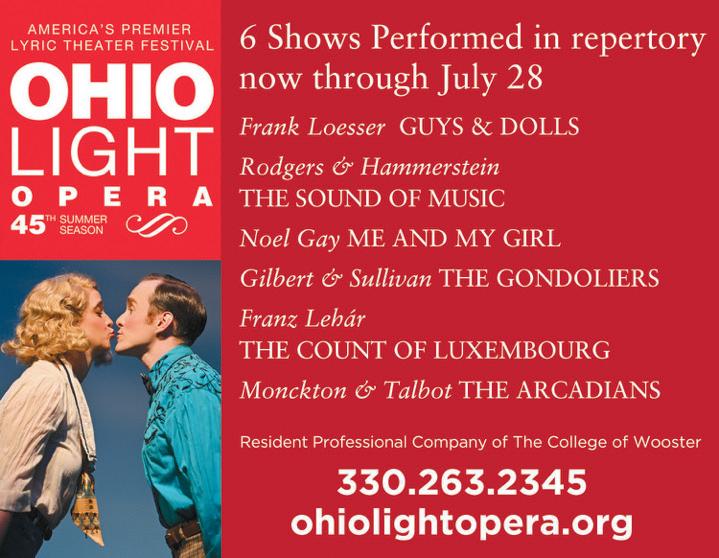
by Dmitri Shostakovich
BORN : September 25, 1906, in St. Petersburg
DIED : August 9, 1975, in Moscow
COMPOSED: 1937
WORLD PREMIERE: November 21, 1937, with the Leningrad Philharmonic Orchestra conducted by Yevgeny Mravinsky
CLEVELAND ORCHESTRA PREMIERE: October 30, 1941, led by Music Director Artur Rodziński (who also conducted the US premiere of the work on April 9, 1938, with the NBC Symphony Orchestra)
ORCHESTRATION: 2 flutes, piccolo, 2 oboes, 2 clarinets, E-flat clarinet, 2 bassoons, contrabassoon, 4 horns, 3 trumpets, 3 trombones, tuba, timpani, percussion (bass drum, snare drum, tam-tam, cymbals, triangle, glockenspiel, xylophone), 2 harps, piano, celesta, and strings
DURATION: about 45 minutes
ONE OF THE MOST FREQUENTLY PERFORMED symphonies of the 20th century, Shostakovich ’s Fifth has achieved the status of a modern classic. Western audiences have long admired its great dramatic power and melodic richness.
But the history of the work and its deeply ambiguous Russian context reveal additional layers of meaning that, more than 85 years after the premiere, we are still trying to understand. Shostakovich wrote the Fifth Symphony in what was certainly the most difficult year of his life.
On January 28, 1936, an unsigned editorial in Pravda, the daily paper of the Communist Party, brutally attacked his opera Lady Macbeth of the Mtsensk District, denouncing it as “muddle instead of music.” This condemnation resulted in a sharp decrease of performances of Shostakovich’s music in the ensuing months. Even worse, Shostakovich, whose first child was born in May 1936, lived in constant fear of further reprisals, denunciations, and possibly even more dire acts.
The Communist Party, however, quickly realized that the Soviet Union’s musical life couldn’t afford to lose its greatest young talent, and Shostakovich was granted a comeback. Less than a year after being forced to withdraw his Fourth Symphony, Shostakovich heard his Fifth premiered with resounding success in Leningrad on November 21, 1937. But by that time, the Great Terror had begun, with political show trials resulting in numerous death sentences and mass deportations to labor camps. The Great Terror claimed the lives of some of the country’s greatest artists — including
the poet Osip Mandelstam, the novelist Isaac Babel, and the theater director Vsevolod Meyerhold — but Shostakovich was spared.
Could it be that the qualities we admire in the Fifth Symphony today are the same ones that returned the composer to favor in his time? Shostakovich clearly made a major effort to write a “classical” piece here, one that would be acceptable to the authorities and far removed from his avant-garde Fourth Symphony. Whether that makes this new symphony “A Soviet Artist’s Creative Response to Just Criticism,” as it was officially designated at the time, is another question.

A lot of ink has been spilled over the meaning of this symphony. An official Soviet interpretation of the Fifth was propounded by the novelist Aleksey Tolstoy (a relative of Leo Tolstoy, the author of War and Peace), who was loyal to the Soviet regime. Tolstoy viewed the symphony as a kind of musical Bildungsroman, or coming-of-age story, journeying from suffering to an optimistic finale.
Yet critics — even Soviet ones — have had a hard time reconciling this with what they actually heard. A famous passage in Testimony, Shostakovich’s purported memoirs as edited (and possibly tampered with) by musicologist Solomon Volkov, reflects a radically different view: “It’s as if someone were beating you with a stick and saying, ‘Your business is rejoicing, your business is rejoicing,’ and you rise, shaky, and go marching off, muttering, ‘Our business is rejoicing, our business is rejoicing.’”
To some, this emotional ambiguity was a flaw in the work, while others saw it as a sign of a hidden message. Regardless, Shostakovich’s Fifth stands as a gripping monument to all whose voices were silenced by force or threat.
A dramatic and ominous opening motif sets the stage for the symphony’s first movement; a second theme, played by the violins in a high register, is warm and lyrical but at the same time eerie and distant. The music seems to hesitate for a long time, until the horns begin a march theme that leads to an intense speeding up of the tempo.
It is not a funeral march, but neither is it exactly triumphant. At the climactic moment, the two earlier themes return before the movement ultimately comes to a peaceful, almost otherworldly close.
The brief Allegretto movement brings some relief from the preceding drama. Its Ländler-like melodies bear witness to Mahler ’s influence, both in the bookending sections and the middle portion, whose theme is played by solo violin and then by the flute.
The special tone color of the third movement is due to the absence of brass instruments, as well as to the fact that the violins are divided beyond the usual two groups and into three. This heart-wrenching music turns the march of the first movement into a lament, also incoporating a theme resembling a Russian Orthodox funeral chant. The tension gradually increases and finally erupts about two-thirds of the way through the movement. The opening melody then returns in a more intense rendering. To the end, the music preserves the unmistakable character of grief.
The last movement attempts to resolve the enormous tension that has built up over the course of the symphony by introducing a relatively light-hearted march tune. Yet after an exciting development, the music suddenly stops on a set of harsh chords and a slower, more introspective section begins with a haunting horn solo. This quiet intermezzo ends abruptly with the entrance of timpani and snare drum, ushering in a recapitulation of the march tune, played at half its original tempo. Merely a shadow of its former self, the melody is elaborated until it suddenly alights on a bright D-major chord in full orchestral splendor — remaining unchanged for more than a minute to end the symphony.
— Peter Laki



conductor

“Dynamic and sharp on the podium” (Bachtrack) and with a “scrupulous ear for instrumental color and blend” (The Washington Post), Hannu Lintu maintains his reputation as one of the world’s finest conductors. This past season, Lintu took up the baton as music director of the Orquestra Gulbenkian while continuing his tenure as chief conductor of the Finnish National Opera and Ballet. The appointments follow a stream of successful concerts with Orquestra Gulbenkian and breathtaking productions with the Finnish National Opera and Ballet, including Richard Strauss’s Salome, Puccini ’s Turandot, Britten’s Billy Budd, and Mozart ’s Don Giovanni.
Other highlights of the 2023–24 season included debuts with the Berliner Philharmoniker, NHK Symphony Orchestra, and SWR Symphonieorchester, and returns to the Boston Symphony Orchestra, Chicago Symphony Orchestra, and Orchestre de la Suisse Romande. Recent years have also seen Lintu conduct the New York Philharmonic, Bavarian Radio Symphony Orchestra, Deutsches Symphonie-Orchester Berlin, BBC Symphony Orchestra, St. Louis Symphony Orchestra, and Orchestre symphonique de Montréal alongside the likes of Gil Shaham, Kirill Gerstein, and Daniil Trifonov.
Lintu has made several recordings for Ondine, BIS Records, Naxos, Avie Records, and Hyperion Records. His diverse discography comprises recordings of Magnus Lindberg’s orchestral works, the complete Beethoven piano concertos with Stephen Hough, and Lutos ławski ’s four symphonies, all with the Finnish Radio Symphony Orchestra. His output boasts two International Classical Music Awards and several Gramophone and Grammy nominations for his recordings of Bartók ’s violin concertos with Christian Tetzlaff, Rautavaara’s Kaivos, and the violin concertos of Sibelius and Thomas Adès with Augustin Hadelich.
Lintu studied cello and piano at the Sibelius Academy, where he also later studied conducting with Jorma Panula . He participated in masterclasses with Myung-Whun Chung at L’Accademia Musicale Chigiana in Siena, Italy, and took first prize at the Nordic Conducting Competition in Bergen in 1994.
cello | Louis D. Beaumont Chair
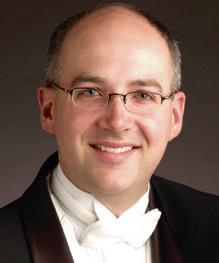
Mark Kosower joined The Cleveland Orchestra as principal cello in 2010, and is equally known around the world as a recitalist, concerto soloist, and chamber musician. Prior to his appointment in Cleveland, he was solo cellist of the Bamberg Symphony (2006–10).
In past seasons, Kosower has appeared as soloist with the symphony orchestras of Detroit, Houston, Minnesota, Oregon, Milwaukee, Indianapolis, Phoenix, and Seattle, as well as the Hong Kong Philharmonic, China National Symphony Orchestra, National Symphony of Taiwan, Brazilian Symphony Orchestra, Rotterdam Philharmonic Orchestra, Orchestre de Paris, St. Paul Chamber Orchestra, and Ravinia Festival Orchestra. Kosower is also a frequent guest at chamber music festivals, including the Santa Fe Music Festival, Pacific Music Festival, and Seattle Chamber Music Society.
Kosower’s 2024–25 season includes appearances with the National Symphony Orchestra of Costa Rica, Puerto Rico Symphony, Pasadena Symphony, and The Cleveland Orchestra, among others. He will also premiere Samuel Adler’s Two Toccatas for cello and piano in New York.
During the pandemic, Kosower performed J.S. Bach ’s complete cello suites at Cleveland’s Trinity Cathedral as part of his ongoing Bach for Humanity initiative. He has recorded for the Ambitus, Delos, and VAI labels, and was the first to record the complete solo cello music of Ginastera , which he completed for Naxos and was described as a “powerful advocate of Ginastera’s art” by MusicWeb International.
In addition to performing, Kosower regularly serves on faculty for Carnegie Hall’s National Youth Orchestra of the United States of America, Colorado College’s Summer Music Festival, and California’s Hidden Valley Music Seminars. He has also taught students around the world, including at the New World Symphony, Shanghai Orchestra Academy, and Baccareli Institute of São Paulo.
Born in Wisconsin, Kosower began studying cello at age one-and-a-half with his father who studied with Ernst Silberstein, principal cello of The Cleveland Orchestra under George Szell. He later studied with Janos Starker at Indiana University and with Joel Krosnick at The Juilliard School. Among his many accolades, Kosower has received an Avery Fisher Career Grant, a Sony Grant, and grand prize in the Irving M. Klein International String Competition.
Franz Welser-Möst Music Director
KELVIN SMITH FAMILY CHAIR
FIRST VIOLINS
Liyuan Xie
FIRST ASSOCIATE CONCERTMASTER
Virginia M. Lindseth, PhD, Chair
Jung-Min Amy Lee
ASSOCIATE CONCERTMASTER
Gretchen D. and Ward Smith Chair
Jessica Lee
ASSISTANT CONCERTMASTER
Clara G. and George P. Bickford Chair
Stephen Tavani
ASSISTANT CONCERTMASTER
Dr. Ronald H. Krasney Chair
Wei-Fang Gu
Drs. Paul M. and Renate H. Duchesneau Chair
Kim Gomez
Elizabeth and Leslie Kondorossy Chair
Chul-In Park
Harriet T. and David L. Simon Chair
Miho Hashizume
Theodore Rautenberg Chair
Jeanne Preucil Rose
Larry J.B. and Barbara S. Robinson Chair
Alicia Koelz
Oswald and Phyllis Lerner Gilroy Chair
Yu Yuan
Patty and John Collinson Chair
Isabel Trautwein
Trevor and Jennie Jones Chair
Katherine Bormann
Analisé Denise Kukelhan
Gladys B. Goetz Chair
Zhan Shu
Youngji Kim
Genevieve Smelser
SECOND VIOLINS
Stephen Rose*
Alfred M. and Clara T. Rankin Chair
Jason Yu2
James and Donna Reid Chair
Eli Matthews 1
Patricia M. Kozerefski
and Richard J. Bogomolny Chair
Sonja Braaten Molloy
Carolyn Gadiel Warner
Elayna Duitman
Ioana Missits
Jeffrey Zehngut
Sae Shiragami
Kathleen Collins
Beth Woodside
Emma Shook
Dr. Jeanette Grasselli Brown
and Dr. Glenn R. Brown Chair
Yun-Ting Lee
Jiah Chung Chapdelaine
VIOLAS
Wesley Collins*
Chaillé H. and Richard B. Tullis Chair
Stanley Konopka 2
Mark Jackobs
Jean Wall Bennett Chair
Lisa Boyko
Richard and Nancy Sneed Chair
Richard Waugh
Lembi Veskimets
The Morgan Sisters Chair
Eliesha Nelson
Anthony and Diane Wynshaw-Boris Chair
Joanna Patterson Zakany
William Bender
Thomas Lauria and Christopher Lauria Chair
Gareth Zehngut
CELLOS
Mark Kosower*
Louis D. Beaumont Chair
Richard Weiss 1
The GAR Foundation Chair
Charles Bernard2
Helen Weil Ross Chair
Bryan Dumm
Muriel and Noah Butkin Chair
Tanya Ell
Thomas J. and Judith Fay Gruber Chair
Ralph Curry
Brian Thornton
William P. Blair III Chair
David Alan Harrell
Martha Baldwin
Dane Johansen
Paul Kushious
BASSES
Maximilian Dimoff*
Clarence T. Reinberger Chair
Derek Zadinsky2
Charles Paul1
Mary E. and F. Joseph Callahan Chair
Mark Atherton
Thomas Sperl
Henry Peyrebrune
Charles Barr Memorial Chair
Charles Carleton
Scott Dixon
HARP
Trina Struble*
Alice Chalifoux Chair
FLUTES
Joshua Smith*
Elizabeth M. and William C. Treuhaft Chair
Saeran St. Christopher
Jessica Sindell2
Austin B. and Ellen W. Chinn Chair
Mary Kay Fink
PICCOLO
Mary Kay Fink
Anne M. and M. Roger Clapp Chair
OBOES
Frank Rosenwein*
Edith S. Taplin Chair
Corbin Stair
Sharon and Yoash Wiener Chair
Jeffrey Rathbun 2
Everett D. and Eugenia S. McCurdy Chair
Robert Walters
ENGLISH HORN
Robert Walters
Samuel C. and Bernette K. Jaffe Chair
CLARINETS
Afendi Yusuf*
Robert Marcellus Chair
Robert Woolfrey
Victoire G. and Alfred M. Rankin, Jr. Chair
Daniel McKelway2
Robert R. and Vilma L. Kohn Chair
Amy Zoloto
E-FLAT CLARINET
Daniel McKelway
Stanley L. and Eloise M. Morgan Chair
BASS CLARINET
Amy Zoloto
Myrna and James Spira Chair
BASSOONS
John Clouser*
Louise Harkness Ingalls Chair
Gareth Thomas
Barrick Stees 2
Sandra L. Haslinger Chair
Jonathan Sherwin
CONTRABASSOON
Jonathan Sherwin
HORNS
Nathaniel Silberschlag*
George Szell Memorial Chair
Michael Mayhew§
Knight Foundation Chair
Jesse McCormick
Robert B. Benyo Chair
Hans Clebsch
Richard King
Meghan Guegold Hege
TRUMPETS
Michael Sachs*
Robert and Eunice Podis Weiskopf Chair
Jack Sutte
Lyle Steelman 2
James P. and Dolores D. Storer Chair
Michael Miller
CORNETS
Michael Sachs*
Mary Elizabeth and G. Robert Klein Chair
Michael Miller
TROMBONES
Brian Wendel*
Gilbert W. and Louise I. Humphrey Chair
Richard Stout
Alexander and Marianna C. McAfee Chair
Shachar Israel2
BASS TROMBONE
Luke Sieve
EUPHONIUM & BASS TRUMPET
Richard Stout
TUBA
Yasuhito Sugiyama*
Nathalie C. Spence and Nathalie S. Boswell Chair
TIMPANI vacant
PERCUSSION
Marc Damoulakis*
Margaret Allen Ireland Chair
Thomas Sherwood
Tanner Tanyeri
KEYBOARD INSTRUMENTS
Carolyn Gadiel Warner
Marjory and Marc L. Swartzbaugh Chair
LIBRARIANS
Michael Ferraguto
Joe and Marlene Toot Chair
Donald Miller
Gabrielle Petek
ENDOWED CHAIRS CURRENTLY UNOCCUPIED
Elizabeth Ring and William Gwinn Mather Chair
Blossom-Lee Chair
Paul and Lucille Jones Chair
Charles M. and Janet G. Kimball Chair
Sunshine Chair
Otto G. and Corinne T. Voss Chair
Mr. and Mrs. Richard K. Smucker Chair
Rudolf Serkin Chair
CONDUCTORS
Christoph von Dohnányi
MUSIC DIRECTOR LAUREATE
Daniel Reith
ASSOCIATE CONDUCTOR
Sidney and Doris Dworkin Chair
Lisa Wong
DIRECTOR OF CHORUSES
Frances P. and Chester C. Bolton Chair
* Principal
§ Associate Principal
1 First Assistant Principal
2 Assistant Principal
This roster lists full-time members of The Cleveland Orchestra. The number and seating of musicians onstage varies depending on the piece being performed. Seating within the string sections rotates on a periodic basis.
Now in its second century, The Cleveland Orchestra, under the leadership of Music Director Franz Welser-Möst since 2002, is one of the most sought-after performing ensembles in the world. Year after year, the ensemble exemplifies extraordinary artistic excellence, creative programming, and community engagement. The New York Times has called Cleveland “the best in America” for its virtuosity, elegance of sound, variety of color, and chamber-like musical cohesion.
Founded by Adella Prentiss Hughes, the Orchestra performed its inaugural concert in December 1918. By the middle of the century, decades of growth and sustained support had turned it into one of the most admired globally.
The past decade has seen an increasing number of young people attending concerts, bringing fresh attention to The Cleveland Orchestra’s legendary sound and committed programming. More recently, the Orchestra launched several bold digital projects, including the streaming platform Adella, the podcast On a Personal Note, and its own recording label, a new chapter in the Orchestra’s long and distinguished recording and broadcast history. Together, they have captured the Orchestra’s unique artistry and the musical achievements of the Welser-Möst and Cleveland Orchestra partnership.
The 2024–25 season marks Franz Welser-Möst’s 23rd year as music director, a period in which The Cleveland Orchestra earned unprecedented acclaim around the world, including a series of residencies at the Musikverein in Vienna, the first of its kind by an American orchestra, and a number of acclaimed opera presentations.
Since 1918, seven music directors — Nikolai Sokoloff, Artur Rodziński, Erich Leinsdorf, George Szell, Lorin Maazel, Christoph von Dohnányi, and Franz Welser-Möst — have guided and shaped the ensemble’s growth and sound. Through concerts at home and on tour, broadcasts, and a catalog of acclaimed recordings, The Cleveland Orchestra is heard today by a growing group of fans around the world.
@ClevelandOrchestra
@CleveOrchestra
@CleveOrch
@clevelandorchestra FRANZ WELSER-MÖST, MUSIC DIRECTOR
Whether escaping the bustle of daily life with a beloved classic or discovering new worlds with the less familiar, come share the extraordinary this season with The Cleveland Orchestra .

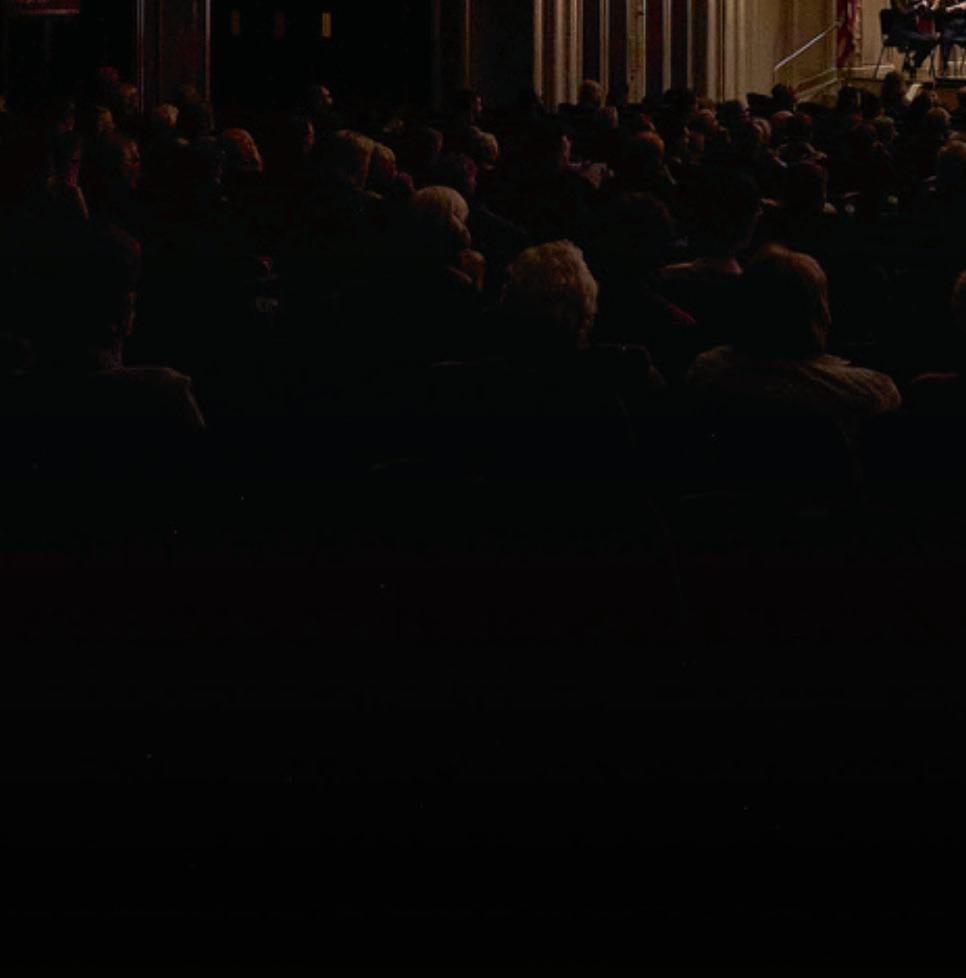
When you subscribe, you provide vital support to your Cleveland Orchestra and enjoy these exclusive benefits:
• The best seats at the best prices
• Free and easy ticket exchanges
•Purchase your parking in advance
• 20% off additional ticket purchases
• 10% off at The Cleveland Orchestra Store
•Money back guarantee




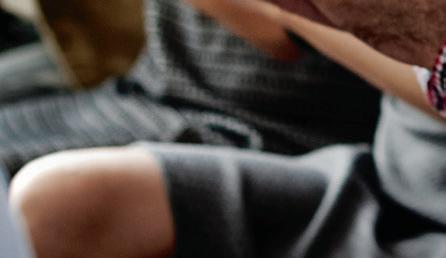




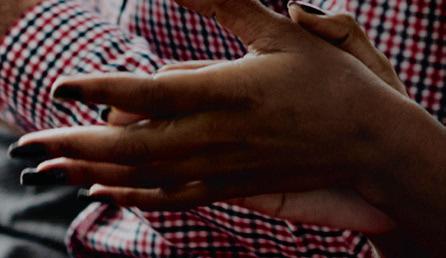

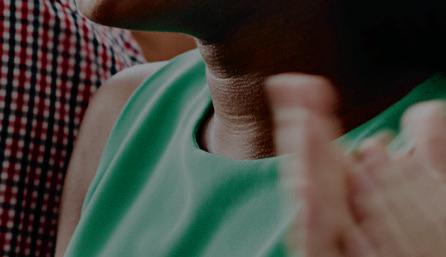














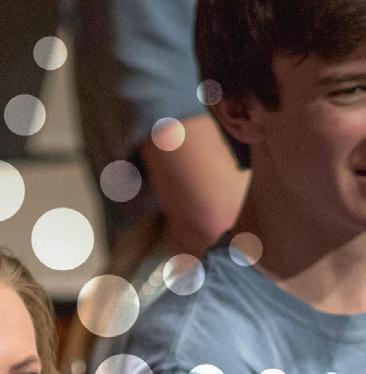




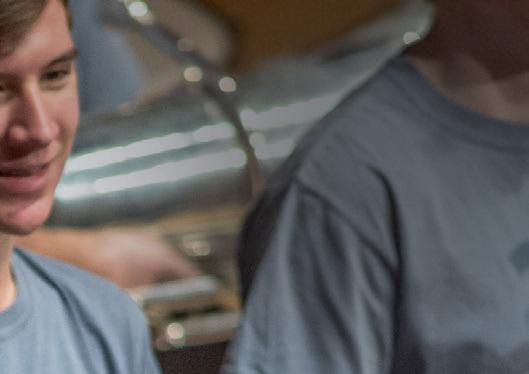




















SINCE THE INAUGURATION of Blossom Music Center as the summer home of The Cleveland Orchestra in 1968, Kent State University has participated in helping to develop Blossom’s role as a center for professional training in the visual and performing arts.
Each summer, advanced young musicians from around the globe gather together with principal members of The Cleveland Orchestra, the critically acclaimed Miami String Quartet, and major guest artists for five weeks of intensive chamber music study and performance at the professional level.
Since its founding, over 2,644 talented young musicians have been afforded the opportunity to hone their skills, and alumni have become members of renowned orchestras and chamber groups. Currently, 16 Kent Blossom Music Festival alumni perform with The Cleveland Orchestra.
VIOLINS
Si Cheng Chan
Derek Choi
Tony Chow
Rachel Green
Avery Hsieh
Nathan Jeoung
Rachel Lawton
O Rio Lee
Man Him Leung
Alvaro Molina
Nathaniel Robinson*
Wing Hong Wong
VIOLAS
Nelsy Badia*
Isabel Barron*
Victoria Goettel
Rachael Lindsey
Wan Loo Soo
Jack Wong
CELLOS
Victor Cediel
Jacqueline Kaminski
Kamryn McCrory
Yu-Chen Shih
Yun-De Tsai
An-Chi Tsou
BASS
Hayley Witmore
FLUTES
Jake McQuaid
Savanna Nygard
OBOES
Hannah Fusco
Dylan Reynallt
Alexis Wilson
CLARINETS
Mohammad AbdNikfarjam
Anton Dmitrik
Ethan Morad*

BASSOONS
Andy Flurer
Finn McCune
Luis Torres
HORNS
Ariel Arney
Hongyi Li
Shu-Ching Tai
KEYBOARD INSTRUMENTS
Hwei Shin Chang
Icy Nguyen
Chloe Raber
Hasti Safaei
* denotes returning Young Artists












Experience The Cleveland Orchestra’s digital platform with new & improved features.

Concert Experiences
Experience on-demand concerts with exclusive interviews and behind-the-scenes features!
Livestreamed Concerts
Enjoy six concerts broadcast live from Severance throughout the 2024–25 season.
COMING SOON
Archival Audio Recordings
By popular demand, stream exclusive recordings from The Cleveland Orchestra’s audio archives.
Educational Content
Access videos and learning resources for children, students, and teachers. Visit stream.adella.live/premium or scan the QR code to secure your subscription today!

Questions? Email adellahelp@clevelandorchestra.com or call 216-231-7300
Guests with Pavilion seats who arrive after the start of the concert may be asked to wait outside the Pavilion until the first convenient pause in the music, after which our ushers will help you to your seats.
Guests on the Lawn may bring their own chairs, but guests with high-backed chairs that obstruct others’ views may be asked to relocate to the rear of the Lawn. Rental chairs are available for a fee of $10 per evening. Tents, flags, balloons, or other structures that might obstruct views or present a hazard are prohibited. Open flames are also prohibited.
Audio recording, photography, and videography are prohibited during performances at Blossom. Photographs and videos can only be taken when the performance is not in progress. As a courtesy to others, please silence all electronic devices prior to the start of the concert.
All Blossom Music Festival events are presented in a smoke-free environment. Smoking or
vaping are not allowed anywhere on the grounds or in buildings once you have entered through the ticket gates. A smoking area is available outside the gates in a designated area of Parking Lot A.
In the event of severe weather, a coordinated campus-wide alert will be issued. Guests and staff will be directed to safety by our staff and loudspeaker system. Visit clevelandorchestra. com or text BLOSSOM to 844-955-4377 for weather updates and more information.
Free tram service between the parking lots and Smith Plaza and the Pavilion is available on a continuous basis before and after each concert. The ADA Van Service can pick up at the Main Gate with service to the Tram Circle.
The Blossom Friends of The Cleveland Orchestra host two Information Centers — one located outside the Main Gate across from the Lawn Ticket Booth and the other inside the Main Gate on Smith Plaza.
Download today for instant, secure, and paperless access to your concert tickets.
For more information and direct links to download, visit clevelandorchestra.com/ticketwallet or scan the code with your smartphone camera to download the app for iPhone or Android. Available for iOS and Android on Google Play and at the Apple App Store.
The Cleveland Orchestra is grateful to these organizations for their ongoing generous support of The Cleveland Orchestra: National Endowment for the Arts, the State of Ohio and Ohio Arts Council, and to the residents of Cuyahoga County through Cuyahoga Arts and Culture.
© 2024 The Cleveland Orchestra and the Musical Arts Association Program books for Cleveland Orchestra concerts are produced by The Cleveland Orchestra and are distributed free to attending audience members.
EDITORIAL
Kevin McBrien, Publications Manager The Cleveland Orchestra kmcbrien@clevelandorchestra.com
DESIGN
Judy Barabas, Red Swing Creative
ADVERTISING
Live Publishing Company, 216-721-1800
PLEASE RECYCLE







